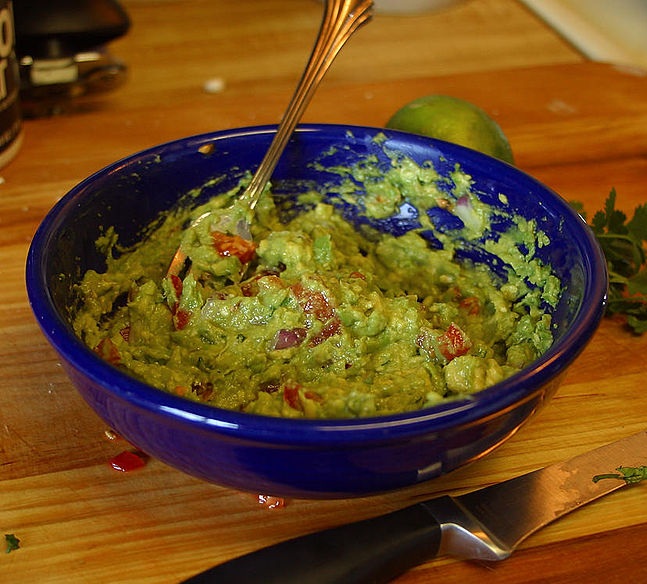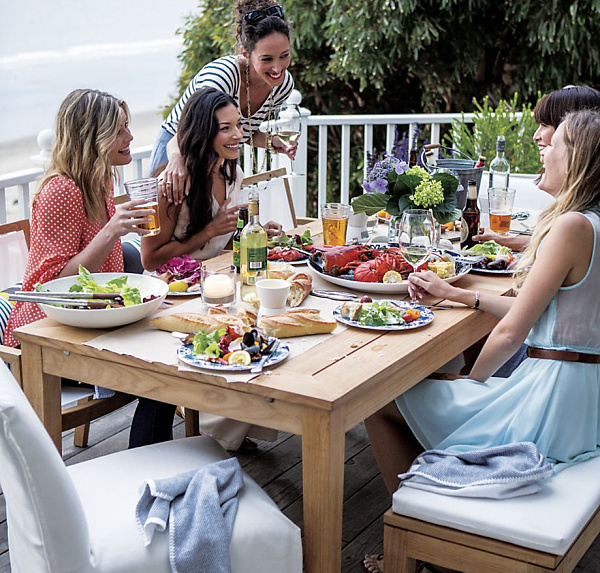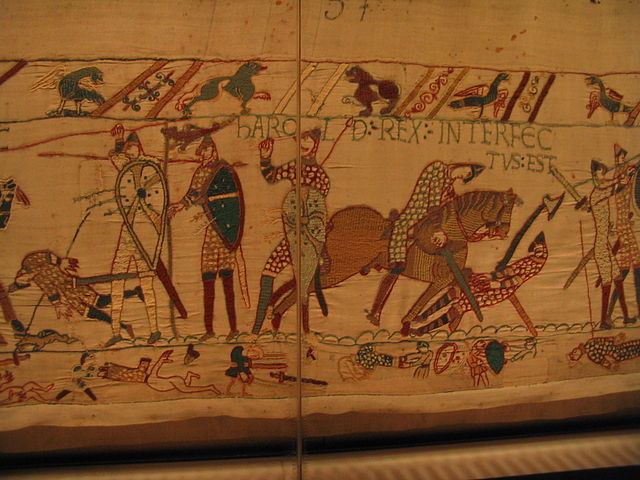Finger Food Ideas for Outdoor Entertaining
When planning an outdoor soirée get-together, at some point your thoughts are going to turn to the question of what snacks to serve. Here are a few ideas to make sure your guests don’t go short of some delicious, fuss-free nibbles.
Dips
Dips are a popular choice for garden parties, and it’s easy to see why: they’re delicious, easy to make, don’t require your guests to use any cutlery or crockery, and combine exceedingly well with a chilled beverage. Served up right, they can also be very appealing visually: they taste great before you’ve even tasted them.
Guacamole
Guacamole was originally an Aztec recipe, meaning that it has similar pre-Columbian origins to the hammock. Guacamole can be purchased ready-made at the supermarket. Homemade guacamole tastes so much better, however, and it’s so simple and easy to make that there’s really no reason not to. The real trick to making great guacamole is to use good, ripe avocados. Supermarkets and green grocers tend to sell their avocados rather firm, so that they can keep longer. This means if you buy your avocados on the same day as you wish to use them then they might not be ready yet. To check an avocado for ripeness, gently press the outside. A ripe avocado should be a little bit soft and have a bit of give. If the avocado is still hard then it needs more time to ripen and should be left on a window sill for a day or two. If the avocado is very soft then it may be over-ripe and no longer good.

To make great guacamole, take two fresh avocados, remove the skin and the seeds, and then mash in a mortar and pestle if you have one, or otherwise using a fork and mixing bowl. Add a little bit of olive oil, balsamic vinegar and some chopped up chillis to taste. Then add half a chopped red onion, some chopped coriander leaves, squeeze the juice from half a lime, and a little salt and crushed black pepper to taste, and stir through. This guacamole can be kept in the refrigerator for later – cover it with plastic wrap directly touching the surface of the dip to prevent oxidation sending it an unsightly grey colour. When you’re to serve, chop up the tomatoes and mix through the guacamole.
Many variations on this theme are possible – except for the avocado, most of these ingredients can be safely omitted if you don’t want them or just don’t have them around. Guacamole is a great way to cater for vegan or vegetarian guests while still serving up something even the most commited carnivore will love. If using animal products is not an issue, however, you can some pecorino cheese, coarsely chopped anchovy fillets or fried-up bacon bits and mix them through for a more salty/savoury flavour.
Yoghurt Based Dip
Yoghurt based dips are a breeze to make, can taste incredible, and look superb. Unsweetened natural yoghurt is the perfect base for a dip and it’s not too difficult to put something superb together in a matter of minutes. Making great dip from natural yoghurt can be as simple as stirring in some pesto sauce, olive oil and minced garlic – that right there is a great dip taking all of about 40 seconds. Other yoghurt based dips of varying difficulty that you could consider include tzatziki, spinach dip, feta and roasted capsicum dip, haydari, and palak ka raita.
If you’re going to be making a few of these yoghurt based dips then it can be well worth your while to invest in a small jar of an inexpensive spice called sumac, readily available from supermarkets and grocery stores. Ground sumac is a middle eastern spice with a tart, acidic flavour, and a gorgeous deep red colour, making it the perfect garnish for these sort of dips. For the best visual effect, sprinkle the sumac on top after the rest of the dip has been made, and don’t mix it in – the flavour is fairly mild so you can heap on a lot of it. This will give your dips that restaurant quality look that will stun your guests, and it tastes great too.
Pita Bread Chips and Crostini
If you’re serving up a plate of dips then you’ll no doubt want to serve up something to dip into them. There’s really not a lot wrong with the traditional route of just buying a few packets of corn chips. If, however, you’re thinking of a healthier alternative, or just want to try something different, then you have plenty of other options.
Pita bread chips are incredibly simple and inexpensive to make, look and smell enticing, and have a wonderful crunch when you bite into them. At their simplest, all you need are some whole rounds of pita bread, brushed with olive oil and lightly salted before cutting into eighths, and then placed into a preheated 200 degree oven for ten minutes or so – you can tell when they’re done because they’re golden brown and crisp. Great ways to vary this recipe include sprinkling sesame seeds and dried parsley on top prior to cooking, or brush some minced garlic on the chips when they’re half way done.
Crostini is just Italian for “little toasts” and toasting some 1cm slices of ciabatta bread in the oven is really all that’s involved. Brush the slices of bread with olive oil, minced garlic, and herbs to taste, and then place in a preheated 180 degree oven for 6 minutes.
Other dipping alternatives include mini breadsticks, celery and carrot sticks, or if you’re entertaining a real caveman crowd you could even try pork rinds.
Skewers
Skewers are an obvious finger food to serve up if you’re going to be barbecuing, and still a great choice when you’re not. For those pressed for time, there are no shortage of ready-to-cook options available from supermarkets, butcher’s shops and delis, and many of these taste great.
If you’re making your own and you choose to use bamboo skewers, don’t forget to soak the skewers beforehand so that they don’t burn. For a more gourmet presentation and variation on flavour you can consider soaking the skewers in wine or juice instead of water.
Skewers are very often used to cook meat but there’s plenty else they can be used for. Fish or prawns can work very well, as can vegetarian skewers. Sticking different coloured capsicums on skewers can create a lot of chromatic contrast, making the skewers look amazing.
Vietnamese Spring Rolls
Vietnamese spring rolls are a little more involved than many of the other finger food ideas outlined here, but they go great in outdoor party when the weather’s really hot. Click here for a great recipe.
Vietnamese spring rolls are best enjoyed with fresh lettuce, Vietnamese mint, and a spicy fish sauce and vinegar dipping sauce. The spring roll is placed with a mint leaf inside a leaf of crunchy lettuce, which the wrapped around it and dipped in the sauce. This makes the spring roll taste wonderfully fresh and crunchy – once you’ve eaten them this way, just eating them plain will seem boring by comparison.
Deviled Eggs
Deviled eggs are remarkably filling and have a surprisingly long history dating all the way back to ancient Rome.
To make deviled eggs, first hard boil the eggs, carefully remove the shells, then halve each egg lengthwise using a sharp kitchen knife. Gently scoop the yolks out into a bowl, taking care to leave the whites intact. Mash the yolks up and then mix in the condiments of your choice – hot sauce, mustard and finely chopped shallots are one good option here – then scoop the yolk mixture back into the egg white halves.
Other ingredients you can try in deviled eggs are coriander leaves, cayenne pepper, capers, turmeric, vinegar, paprika, poppy seed, mayonnaise, garlic, wasabi, sour cream or cheese. To give your garden party a slightly more exotic touch, consider using duck eggs instead of chicken eggs.
Fruit Tray
Fruit is refreshing and delicious, and neutralises the palate to better appreciate other snacks or drinks. As a nice little bonus, it’s about the healthiest kind of finger food you can serve. The freshest and best tasting fruits will be the ones that are local and in season.

Presentation will make the difference between a good fruit tray and an excellent one. Think about colours, and how you can combine them. The inedible parts of the fruit can also be used to good effect in presenting the fruit – a hollowed-out watermelon or pineapple can be filled with other fruit pieces.
This is finger food, remember, so be sure to cut the fruit into bite sized pieces, and provide some toothpicks as well, to minimise finger stickiness.
Cheese and Crackers
This is about as simple as it gets but you’re unlikely to hear anyone complaining about that. Cheese and crackers can be the perfect accompaniment to a wide range of alcoholic beverages – the key to making this work is to choose the right cheese to match the drinks being served. Generally you want to match mild flavoured cheeses to mild flavoured drinks, and intensely flavoured cheeses to intensely flavoured drinks – that way nothing overwhelms the other.
Here are a few ideas for ways you can pair cheese and drinks:
- Mild Cheddar – Brown ales, full bodied dry reds, port.
- Goat’s Cheese – Hefeweizen, witbier, saison, sauvignon blanc, chardonnay.
- Blue Cheese – Stout, imperial stout, traminer, port.
- Pecorino – Pilsner and other pale lager, full Italian reds.
Remember, there are no hard and fast rules here – if it tastes good, it is good.
Chocolate Rum Balls
If you’re looking for more of a dessert style take on some outdoor entertaining finger food, it can be hard to go past chocolate rum balls. Traditional rum balls require no baking, and are perfect for our hot southern hemisphere christmases. Same exquisite – if slightly sinful – variations on the traditional rum ball recipe are apricot rum balls and white chocolate rum balls.
Need a Table to Serve Your Finger Food on?
Nowhere to place these delicious finger-food items? We can sort you out! Check out our range of dining tables and outdoor settings for all your outdoor entertaining needs.






